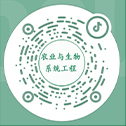| [1] |
Bastian E D, Brown R J. Plasmin in milk and dairy products: An update[J]. International Dairy Journal, 1996, 6(5): 435-457.
|
| [2] |
Ismail B, Nielsen S S. Invited review: Plasmin protease in milk: Current knowledge and relevance to dairy industry[J]. Journal of Dairy Science, 2010, 93(11): 4999-5009.
|
| [3] |
Nielsen S S. Plasmin system and microbial proteases in milk: characteristics, roles and relationship[J]. Journal of Agricultural and Food Chemistry, 2002, 50(22): 6628-6634.
|
| [4] |
McSweeney P L H, Fox F. Advanced Dairy Chemistry [M]. Springer, 2012: 337-386.
|
| [5] |
Kennedy A, Kelly A L. The influence of somatic cell count on the heat stability of bovine milk plasmin activity[J]. International Dairy Journal, 1997, 7(11): 717-721.
|
| [6] |
Richardson B C. The proteinases of bovine milk and the effect of pasteurization on their activity[J]. Zealand Journal of Dairy Science Technology 1983, 18(3): 223-245.
|
| [7] |
Grufferty M B, Fox P F. Milk alkaline proteinase[J]. Journal Dairy Research, 1988, 55(4): 609-630.
|
| [8] |
Politis, Barbano D M, Gorewit RC. Distribution of plasminogen and plasmin in fractions of bovine milk[J]. Journal of Dairy Science, 1992, 75(6): 1402-1410.
|
| [9] |
Caessens P W J R, Daamen W F, Gruppen H, et al. Beta-lactoglobulin hydrolysis: Peptideidentification, SH/SS exchange, and functional properties of hydrolysate fractions formed by the action of plasmin[J]. Journal Agriculture Food Chemistry, 1999, 47(4): 2980-2990.
|
| [10] |
吕加平,王辉,刘鹭. 原料乳耐热蛋白酶对UHT乳品质的影响[J]. 农产品食品科技,2010,4(2):3-9.Lü Jiaping, Wang Hui, Liu Lu. Effects of heat-resistant protease from yaw milk on quality of UHT milk[J]. Agricultural food products science and technology, 2010, 4(2): 3-9. (in Chinese with English abstract)
|
| [11] |
王辉,吕加平,刘鹭,等. 耐热蛋白酶对UHT乳蛋白的水解作用[J]. 食品科学,2010,31(17):228-231.Wang Hui, Lü Jiaping, Liu Lu, et al. Hydrolysis effect of heat-resistant protease on UHT milk[J]. Food Science, 2010, 31(17): 228-231. (in Chinese with English abstract)
|
| [12] |
Datta N, Deeth H C. Age gelation of UHT milk-a review[J]. Food and Bioproducts Processing, 2001, 79(4): 197-210.
|
| [13] |
张和平. 原料乳体细胞与原料乳质量及加工特性的关系[M]. 北京:中国轻工业出版社,2012:75-90.Zhang H P. The Relationship Among Somatic Cell, Milk Quality and Processing Properties of Raw Milk[M]. Beijing: China Light Industry Press, 2012: 75-90.
|
| [14] |
Bastian E D, Brown R J, Ernstorm C A. Plasmin activity and milk coagulation[J]. Journal Dairy Science, 1991, 74(11): 3677-3685.
|
| [15] |
Devon Durkee, Kirby Hayes. Effects of cysteine addition and heat treatment during non-fat dry milk processing on the plasmin enzyme system[J]. Dairy Science and Technology, 2008, 88 (1): 81-94.
|
| [16] |
陆东锋,刘太宇. 奶牛场与奶牛小区原料牛奶质量指标的研究[J]. 郑州牧业工程高等专科学校学报,2009,29(1):15-18.Lu Dongfeng, Liu Taiyu. Study on quality guidelines of raw[J]. Journal of Zhengzhou College of Animal Husbandry Engineering, 2009, 29(1): 15-18. (in Chinese with English abstract)
|
| [17] |
吕加平,张书义,王辉,等. 原料乳体细胞数与纤溶酶活性的相关性研究[J]. 中国乳品工业,2010, 38(3):4-6.Lü Jiaping, Zhang Shuyi, Wang Hui, et al. Relativity of SCC and plasmin activity in raw milk[J]. China Dairy Industry, 2010, 38(3): 4-6. (in Chinese with English abstract)
|
| [18] |
Ballou L U, Pasquini M, Bremel R D, et al. Factors affecting herd milk composition and milk plasmin at four levels of somatic cell counts[J]. Journal of Dairy Science, 1995, 78(10): 2186-2195.
|
| [19] |
Klei L R, Lynch J M, Barbano D M, et al. Influence of milking three times a day on milk quality[J]. Journal Dairy Science, 1997, 80(3): 427-36.
|
| [20] |
梁霄,刘鹭,张书文,等. 不同品种原料乳理化特性分析[J]. 食品科学,2013,34(5):50-54.Liang Xiao, Liu Lu, Zhang Shuwen, et al. Analysis of physicochemical properties of different raw milk[J]. Food Science, 2013, 34(5): 50-54. (in Chinese with English abstract)
|
| [21] |
Korycha-Dahl M, Dumas B R, Chene N, et al. Plasmin activity in milk[J]. Journal ofDairy Science, 1983, 66(4): 704-711.
|
| [22] |
Richardson B C. Variation of concentration of plasmin and plasminogen in bovine milk with lactation[J]. New Zealand Journal of Dairy Science and Technology, 1983, 18(3): 247-252.
|
| [23] |
Theodorou G. Factors affecting the plasmin-plasminogen system in milk obtained from three Greek dairy sheep breeds with major differences in milk production capacity[J]. Journal of Dairy Science, 2007, 90(7): 3263-3269.
|
| [24] |
Johan Schaar. Plasmin activity and proteose-peptone content of individual milks[J]. Journal of Dairy Research, 1985, 52(3): 369-378.
|
| [25] |
Prado B M, Sombers S E, Ismail B, et al. Effect of heat treatment on the activity of inhibitors of plasmin and plasminogen activators in milk[J]. International Dairy Journal, 2006, 16(6): 593-599.
|
| [26] |
Lu R R, Stevenson C D, Guck S E, et al. Effect of various heat treatments on plasminogen activation in bovine milk during refrigerated storage[J]. International Journal of Food Science and Technology, 2009, 44(4): 681-687.
|
| [27] |
Thierry S D, Gérard H, Jean L G. Heat inactivation of native plasmin, plasminogen and plasminogen activators in bovine milk: A revisited study[J]. Lait, 2001, 81(6): 715-729.
|
| [28] |
Metwalli A A M, Jongh H H J, Boekel M A J S. Heat inactivation of bovine plasmin[J]. International Dairy Journal, 1998, 8(1): 47-56.
|
| [29] |
Ryan K N, Stevenson C D, Hayes K D. Mechanism of decreased heat-induced activation of plasminogen in the presence of cysteine[J]. International Dairy Journal, 2012, 23(2): 79-85.
|




 下载:
下载:





